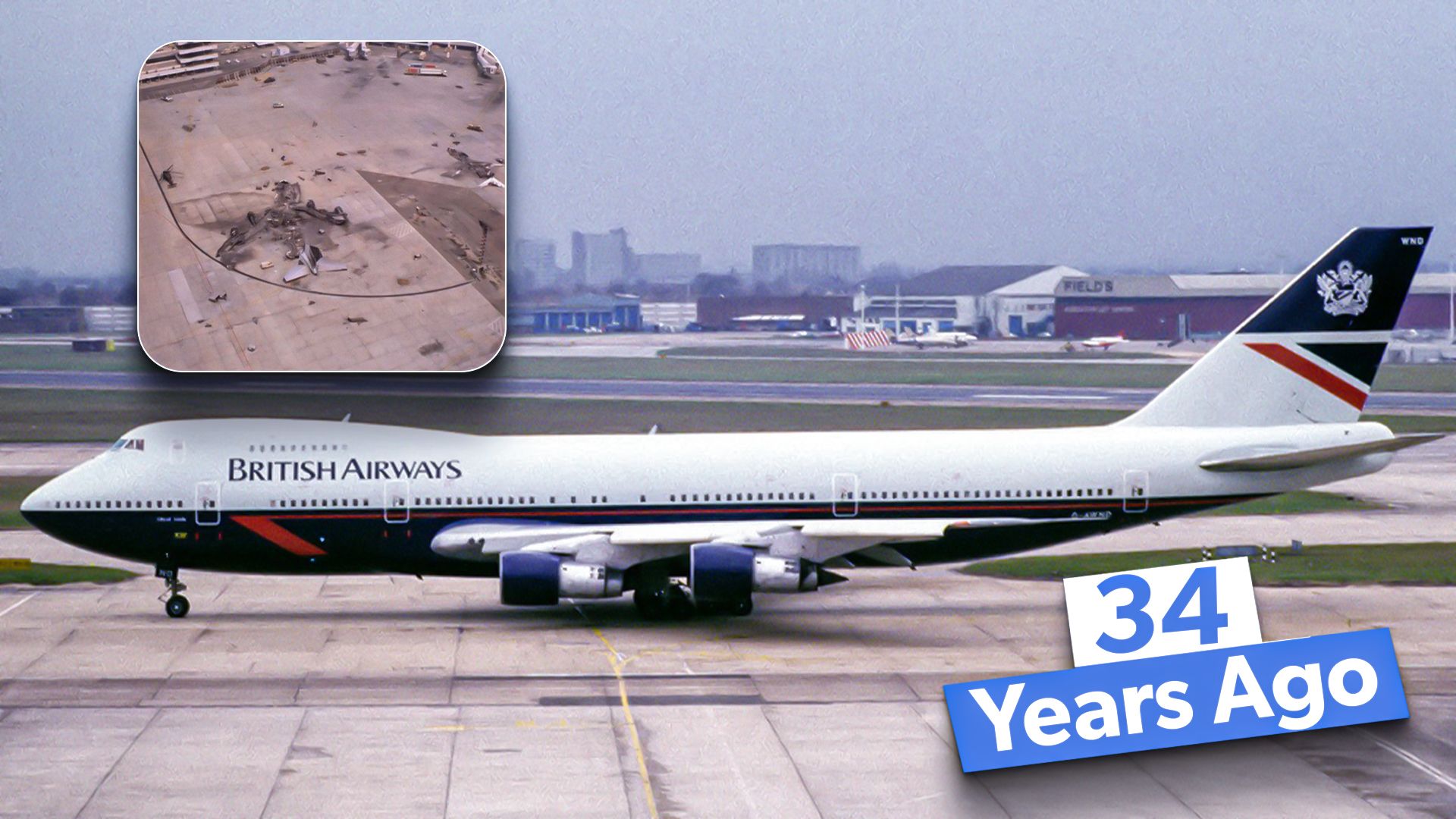Summary
- British Airways Flight 149 departed from London Heathrow to Kuala Lumpur with 367 passengers onboard, delayed due to an auxiliary power unit issue.
- Tensions in the Middle East were rising, but the crew was not informed of the worsening situation before takeoff. Passengers witnessed the crew arguing about operating in the region.
- Upon landing in Kuwait, the flight was grounded due to Iraq’s invasion, and passengers and crew were detained and later used as human shields during the Gulf War. The flight remains a subject of controversy and conspiracy theories.
BA149 departed from London Heathrow International Airport on August 1, 1990, destined for its final destination in Kuala Lumpur, with stopovers planned in Kuwait City and Madras. At the same time, the flight had been delayed initially by several hours due to an issue with the aircraft auxiliary power unit. The flight officially departed the British Capital at 18:05 that evening local time, with 367 passengers onboard.
British Airways Flight 149 was a service operated by the British flag carrier, which had one of its oldest Boeing 747s, 136, in its fleet. Carrying serial number 19764 and registration G-AWND, the Boeing 747-136 held the name ‘City of Leeds’ and had operated for BOAC before joining the British Airways fleet in 1974.
Captained by Richard Brunyate from London to Kuwait, the secondary captain Peter Clark was expected to take over for its second leg onto Madras. Clive Earthy, the Cabin Service Director, oversaw passengers onboard.
Tension in the Middle East had been rising due to a political situation between Iraq and Kuwait, where demands for the territory by Iraq Kuwait to be surrendered, and its military had been staging a military buildup on the border for weeks. Before the flight departed England, the crew had requested up-to-date reports before takeoff; however, they were not told that the situation was worsening.
367 onboard
Passengers had widely seen media reports of the political tension in Kuwait, and there were claims that passengers witnessed the crew arguing about whether the flight should operate to the region. Nonetheless, the flight departed for Kuwait. Overall, the service was destined for Kuala Lumpur, to Subang International Airport, now called Sultan Abdul Aziz Shah Airport (SUB), the main international airport at the time for Kuala Lumpur.
Before the aircraft arrived in Kuwait, the neighboring nation of Iraq had decided to launch a full-scale invasion of Kuwait in the early morning, where the Iraqi Army had quickly advanced as far as Kuwait City and taken control of the airport.
The flight touched down in Kuwait at 01:13 (GMT), and passengers disembarked and expected an hour’s wait. The airport was reportedly deserted, and no staff could be seen. All other scheduled flights to the airport had already been canceled or diverted, and the 30 passengers onboard who had planned to end their journey in Kuwait proceeded to immigration; however, they realized their baggage was not being unloaded.
The remaining crew and passengers for the onward journey remained onboard the aircraft in anticipation of the next leg; however, during preparations for takeoff, the crew was advised the airport would be closed for two hours. Shortly after, the Iraqi higher bombers bombed the airport’s runway, preventing its use and turning off the airport’s control tower.
The cabin crew ordered an aircraft evacuation, and passengers swiftly entered the terminal. By 04:30 (GMT), crew and passengers were transported by the Iraqi Army to an onsite hotel, and reports were noted that all crew and passengers were safe and well at the time. The aircraft was later destroyed, and the responsibility for the sabotage remains unknown.

Related
History: The Merger That Formed Today’s British Airways
A look at the carriers that came together to form British Airways and the historic 1974 merger process itself.
Males were detained across sites in Iraq and Kuwait
According to some passengers, during their time in capture, they allege that they were witness to several horrible atrocities where they were subject to abuse. Women and children were allowed to return to their homes in August. However, males and other remaining detainees were transported to various sites across Iraq and Kuwait and used as human shields to deter offensive operations during the Gulf War.
To secure passenger release, the then British Prime Minister, Edward Health, traveled to Baghdad to lead negotiations, which led to direct talks between Heath and Saddam Hussein. The majority of the surviving detainees were reported to suffer from post-traumatic stress disorder after being released. One Kuwaiti national was reported killed on the flight by Iraqi troops, while all others were not physically injured.
The flight continues to be controversial, and many say the fate of BA149 could have been avoided by better communication. Accusations and conspiracy theories have noted they believe the flight was used as a ‘Trojan Horse’ to transport undercover illteniligence and British Military personnel into Kuwait, and while many investigations have been conducted since, including denials from Margaret Thatcher, denied any British government efforts that influenced the British Airways flight.
More recently, the then Foreign Secretary, Lizz Truss, confirmed on November 23, 2021, that the government of that time misled the airline and public without prior warnings of increased tension in the area and that this information was not passed on to the carrier.
This July, an announcement was made that passengers and crew from the flight had decided to sue the government and airline for not acting upon the warnings they had received before taking the flight.

Related
British Airways & UK Government Sued Over 1990 Kuwait Hostage Crisis
Evidence, uncovered once the government’s documents were unclassified, pointed to the fact that the airline and government knew about the invasion.




